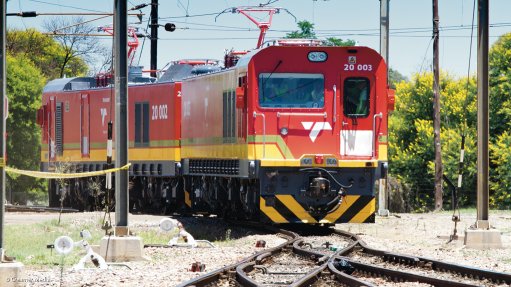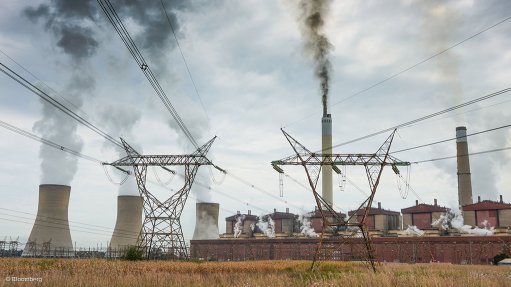Updated IRP report to be released ahead of Cabinet approval, Mathe confirms
South African National Energy Development Institute CEO Dr Titus Mathe has confirmed that a report containing a remodelled Integrated Resource Plan for 2024 (IRP2024) and incorporating stakeholder comments will be released into the public domain before it is sent to Cabinet for its approval by end-March.
Mathe is chairing a committee set up to oversee a review of the much-criticised draft IRP2023.
No specifics have been provided regarding the timing of the release, however, given that the draft document would be subjected to an internal technical assessment, as well as an international benchmarking evaluation by a Chinese energy research institute before being published.
Mathe told participants during a hybrid public consultation session in Cape Town that the new draft was unlikely to be finalised by the November 30 deadline initially set by Electricity and Energy Minister Dr Kgosientsho Ramokgopa, who also addressed the gathering.
This, owing to the fact that the drafting team intended to integrate inputs received during a series of intense public and technical consultations, held during the last week of November.
During these consultations, the Department of Mineral Resources and Energy (DMRE) provided insight into the updated demand, supply and technology cost assumptions used to remodel the IRP and to produce five new scenarios.
These scenarios differed materially from those included in the draft IRP2023, a document that generated more than 4 300 public comments following its release in January.
These comments were largely critical of both the input assumptions used in the initial modelling, as well as an outcome that failed to address security of electricity supply and, thus, included loadshedding until at least 2027.
The new remodelling has been conducted by a technical team comprising officials from the DMRE, Eskom and the National Transmission Company South Africa using the Plexos energy modelling software.
A key change relates to the energy availability factor (EAF) arising from Eskom’s coal fleet, the performance of which has improved dramatically since the publication of the draft IRP2023.
Nevertheless, stakeholders have questioned whether the new EAF base case of between 66% and 72% for the period from 2025 to 2050 is sustainable and the DMRE has indicated that it may revise the assumption used in the final document.
Together with an expectation of demand growth of 1.5% to 2% over the period to 2050, the upward revision to the EAF means that loadshedding is now avoided, including for the period to 2030, during which the DMRE is assuming 38.5 GW of new “committed” generation will be added.
The department’s Sonwabo Damba said this new-build assumption had been derived from its assessment of capacity that would be procured from independent power producers through both public (8.6 GW) and private (13.8 GW), as well as new Eskom capacity (5.1 GW). It also assumes ongoing growth in rooftop solar PV capacity from 5.9 GW currently to 11.3 GW by 2030.
Within that pipeline of committed capacity is 6 GW of combined-cycle gas turbine (CCGT) generation for which Ministerial determinations have been gazetted, including Eskom’s 3 GW Richards Bay CCGT project.
For the period from 2031 to 2050, five scenarios have been, including:
- a ‘Reference Case’, comprising 11.3 GW of CCGT, 13.8 GW of open-cycle gas turbine (OCGT) capacity, 24.3 GW of utility PV, 76.4 GW of wind, and 4.4 GW of battery storage;
- a ‘Reference Case – without the 6 GW of gas committed during the period to 2030’, made up of 14 GW of CCGT, 13.3 GW of OCGT capacity, 24.6 GW of utility PV, 75.8 GW of wind, and 4.9 GW of battery storage;
- a ‘Nuclear Case’, where the model has been prevented from selecting gas to cater for 15.3 GW of new nuclear, alongside 28.8 GW of utility PV, 70.8 GW of wind, 1.9 GW of pumped hydro, and 14.8 GW of battery storage;
- an ‘Aggressive Battery Learning Case’, made up of 10.2 GW of CCGT, 11.8 GW of OCGT capacity, 28.4 GW of utility PV, 74.2 GW of wind, and 10.9 GW of battery storage; and
- a ‘Delayed Shutdown ‘scenario where the life of certain coal stations is increased from 50 to 60 years, comprising 7 GW of CCGT, 13 GW of OCGT capacity, 20.4 GW of utility PV, 69.5 GW of wind, and 2.5 GW of battery storage.
During the consultation session, much attention was paid to the technology-cost assumptions used by the DMRE, particularly the decision to use highly sympathetic nuclear costs and learning rates. Concern was also raised about the use of a gas price of $15/GJ, which is regarded as too high.
The costs for solar PV, wind and battery storage were derived from the most recent bidding processes and were, thus, mostly not contested.
The DMRE’s Thabang Audat confirmed that the final gazetted IRP could include policy adjustments that might deviate from the technical report, but indicated that these adjustments would be costed and also be reviewed to ensure that they did not impact security of supply.
Ahead of that policy adjustment, the report would be consulted both internally within government and at the National Economic Development and Labour Council, starting in January, before entering the Cabinet committee process ahead of submission to Cabinet itself.
The DMRE also remained open to entertaining bilateral meetings with stakeholders before then, but Audat stressed that such engagements should not lead to a delay in securing Cabinet approval.
Comments
Announcements
What's On
Subscribe to improve your user experience...
Option 1 (equivalent of R125 a month):
Receive a weekly copy of Creamer Media's Engineering News & Mining Weekly magazine
(print copy for those in South Africa and e-magazine for those outside of South Africa)
Receive daily email newsletters
Access to full search results
Access archive of magazine back copies
Access to Projects in Progress
Access to ONE Research Report of your choice in PDF format
Option 2 (equivalent of R375 a month):
All benefits from Option 1
PLUS
Access to Creamer Media's Research Channel Africa for ALL Research Reports, in PDF format, on various industrial and mining sectors
including Electricity; Water; Energy Transition; Hydrogen; Roads, Rail and Ports; Coal; Gold; Platinum; Battery Metals; etc.
Already a subscriber?
Forgotten your password?
Receive weekly copy of Creamer Media's Engineering News & Mining Weekly magazine (print copy for those in South Africa and e-magazine for those outside of South Africa)
➕
Recieve daily email newsletters
➕
Access to full search results
➕
Access archive of magazine back copies
➕
Access to Projects in Progress
➕
Access to ONE Research Report of your choice in PDF format
RESEARCH CHANNEL AFRICA
R4500 (equivalent of R375 a month)
SUBSCRIBEAll benefits from Option 1
➕
Access to Creamer Media's Research Channel Africa for ALL Research Reports on various industrial and mining sectors, in PDF format, including on:
Electricity
➕
Water
➕
Energy Transition
➕
Hydrogen
➕
Roads, Rail and Ports
➕
Coal
➕
Gold
➕
Platinum
➕
Battery Metals
➕
etc.
Receive all benefits from Option 1 or Option 2 delivered to numerous people at your company
➕
Multiple User names and Passwords for simultaneous log-ins
➕
Intranet integration access to all in your organisation



















